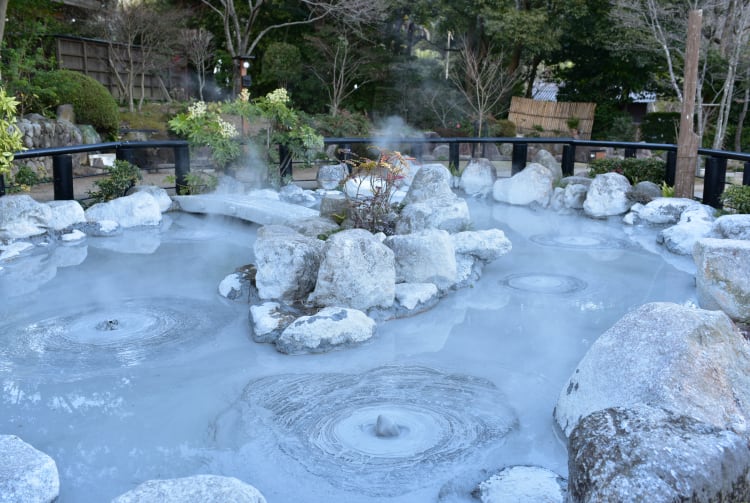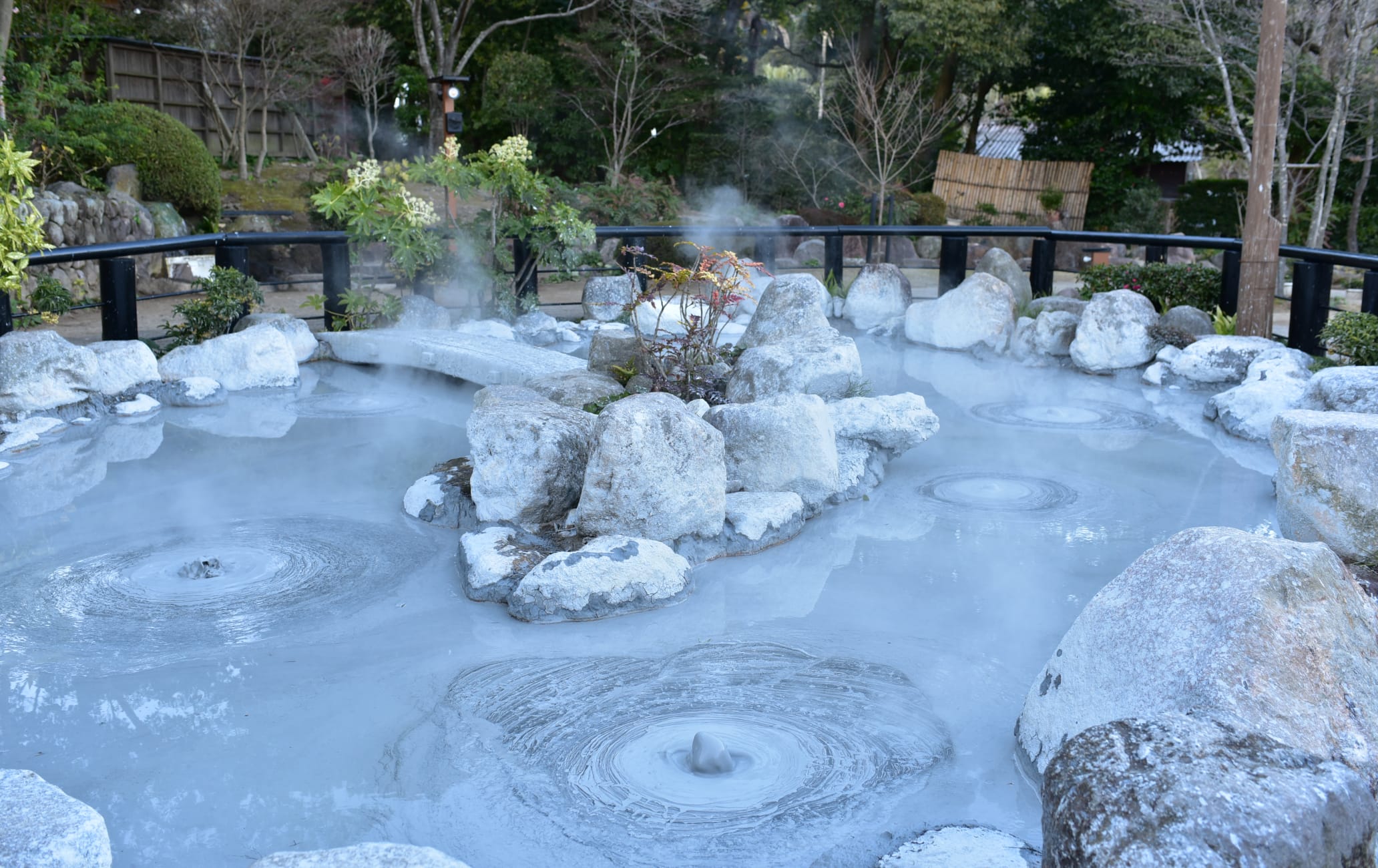Explore seven bubbling onsen hell spots
Located in Beppu's Kannawa and Kamegawa regions, Beppu's Jigoku—also known as the Seven Hells of Beppu—got the name from the mysterious and temperamental springs here. Boiling water and gas bubbled up from the land so violently that people in ancient times loathed its presence.
You can witness the same expulsions of gas, iron oxide-rich steam and bubbling hot mud that have continued to spook guests and locals since the beginning of time.
Don't Miss
- Experiencing all seven hells, each with distinctive characteristics
- Trying an egg and pudding steamed in these natural hells
- A visit to "alligator hell" to view the reptilian residents
How to Get There
Beppu Station can be reached by limited express train from Hakata , Oita, Miyazaki and Hitoyoshi as well as neighboring areas.
From Beppu Station, take a 20-minute ride on a No. 2, 5, 24, or 41 bus and get off at Kannawa or Umi-Jigoku-mae stop; from there the Kannawa area, from Umni-Jigoku to Shiraike-Jigoku, can be reached by foot. Parking is available at all the hell sites.

Buy a Meguri pass
One of the best ways to explore the area is by getting a pass for the Jigoku Meguri, a tour bus. The tour visits all seven hells in around 2 to 2.5 hours. Five of the hells are in the Kannawa district area, and two are in the Shibaseki district. The pass for all seven hells costs 2000 yen. Entry into hells individually is also possible for 400 yen per visit.

Wild things and sites of beauty
Oniyama Jigoku is an animal preserve better known as "alligator hell." There are around 80 alligators here. Note that the jigoku are for viewing, not for bathing in, since they can reach temperatures of about 99 degrees Celsius. Four of them (Umi Jigoku, Chinoike Jigoku, Tatsumaki Jigoku and Shiraiike Jigoku) are designated as National Places of Scenic Beauty.
A unique way to cook
Literally meaning hell-steaming, jigoku mushi is a traditional way of cooking using the steam of a hot spring. It dates back to the Edo period (1603-1867) and is a healthy way to prepare food while also enhancing its dramatic flavor.
Some hells sell specialty soft-boiled eggs and baked pudding, which have been steamed using the heat from the fiery hot springs.
Seven hell highlights
The largest of the hells is Umi (Sea) Jigoku, so named because of its cobalt blue color. It is 200 meters deep. The boiling clay of Chinoike (blood lake) Jigoku is blood red; this is the oldest of Japan's hells.


Rent your own hell oven
In Furomoto, you can buy a set of vegetables, meat or fish produce and cook the ingredients using a special steaming oven. Rental of the oven is extra. Be careful as the steam can escape with force when you open the steaming pots after cooking.



























































